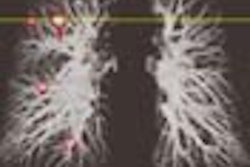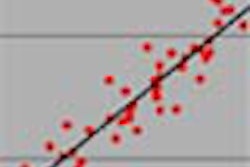A Hong Kong hospital that has treated patients suffering from severe acute respiratory syndrome (SARS) has posted images and a diagnosis protocol on its Web site.
SARS is a mysterious, pneumonia-like illness that was first seen in Hong Kong and has spread to other countries in Southeast Asia. Some cases have also been seen in North America and Europe; health authorities believe it has spread by infected patients traveling from Asia.
Some 150 radiographs and 20 CT studies of SARS patients have been conducted at the department of diagnostic radiology and organ imaging at the Chinese University of Hong Kong, Prince of Wales Hospital. The department has presented images on its Web site, http://www.droid.cuhk.edu.hk, to help other radiology professionals identify signs of SARS symptoms.
SARS patients typically present with symptoms like high fever, chills, rigors, and myalgia and have radiological abnormalities of some sort, such as consolidation or ground-glass opacification, on chest radiographs or CT, according to Dr. Jeffrey Wong Ka Tak, a Prince of Wales Hospital resident who is on a task force dealing with the outbreak.
The hospital’s protocol calls for chest radiography if SARS is suspected. All of the patients the hospital has encountered have abnormal chest radiography findings, the hospital reports.
If a chest radiograph is abnormal, no further imaging is required other than follow-up radiographs. If the chest x-ray is normal, a high-resolution CT can be performed and may show changes one to two days before they are apparent on a chest radiograph, according to the hospital.
The hospital’s protocol notes that SARS is contagious, and that radiology personnel should take appropriate precautions, including cleaning any imaging equipment used to examine a SARS patient.
By AuntMinnie.com staff writers
March 25, 2003
Copyright © 2003 AuntMinnie.com




















